today it is all about angkor. The largest temple complex in the world. Originally constructed as a Hindu temple dedicated to the god Vishnu for the Khmer Empire, it was gradually transformed into a Buddhist temple towards the end of the 12th century. It was built by the Khmer King Suryavarman II
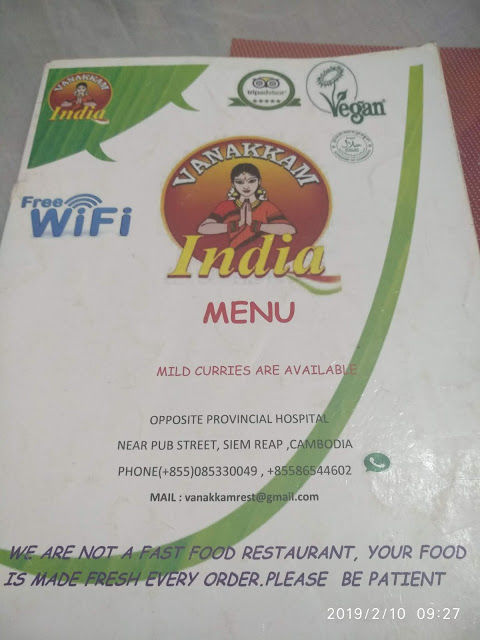
Vanakkam India is an indian restaurant just 3 minutes from the hostel. the best thing about indian restaurants in cambodia is that there is no item on the menu that is not there. whatever is there on the menu is available.
from there we go to the angkor complex. a one day pass is available for $37. a three day pass is available for $62. a one week pass is available for $72. the best option would be to take is a three day pass. so it is recommeneded to stay in siem reap for three days.
from there the first place to visit is Ta Prohm. this became famous with the shooting of the angelina jolie movie lara croft: tomb raider at this very place. india is collaborating with cambodia to restore this temple. but sad to say that they havent done a good job of it.
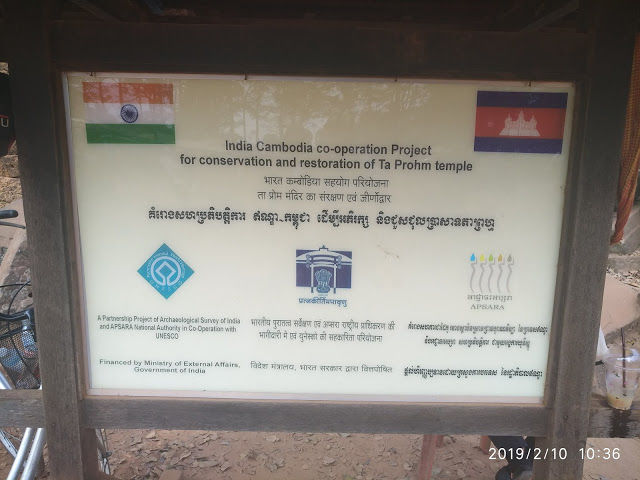
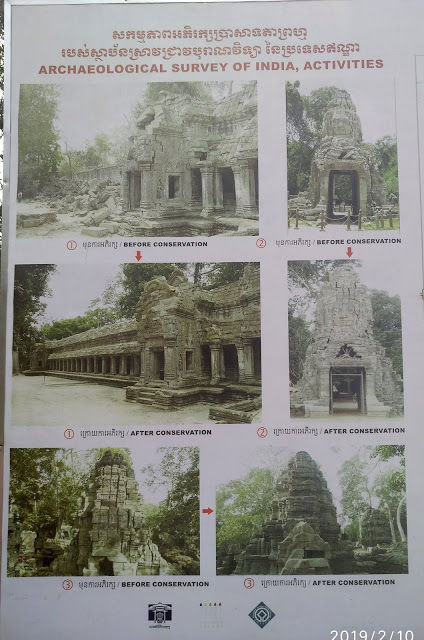

the trees have grown through the walls of this temple over the years giving a very eerie look.
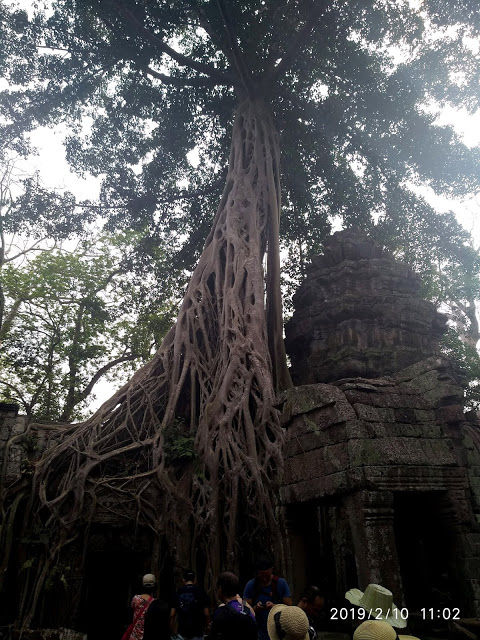
most of the trees are the silk cotton trees growing out of the ruins.
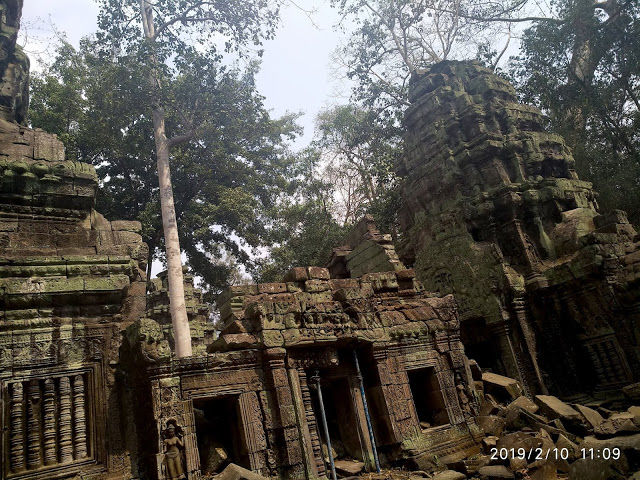

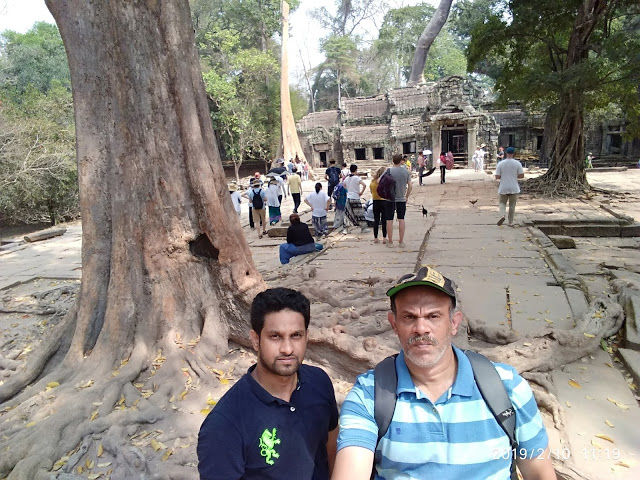
next is the ta keo temple. Ta Keo had to be the state temple of Jayavarman V, son of Rajendravarman. Jayavarman V was ten years old when he succeeded his father, Rajendravarman, in 968. His early years of reign were turbulent and the court officials dominated the royal politics. When he was 17 (in 975), he began the construction of his own state temple, whose modern name is Ta Keo, that was dedicated some time around 1000 ad


next to visit is the banteay kdei. Banteay Kdei, meaning "A Citadel of Chambers", also known as "Citadel of Monks' cells", is a Buddhist temple in Angkor, Cambodia. It is located southeast of Ta Prohm and east of Angkor Thom. Built in the mid-12th to early 13th centuries AD during the reign of Jayavarman VII (who was posthumously given the title "Maha paramasangata pada"), it is in the Bayon architectural style, similar in plan to Ta Prohm and Preah Khan, but less complex and smaller. Its structures are contained within two successive enclosure walls, and consist of two concentric galleries from which emerge towers, preceded to the east by a cloister. This Buddhist monastic complex is currently dilapidated due to faulty construction and poor quality of sandstone used in its buildings, and is now undergoing renovation. Banteay Kdei had been occupied by monks at various intervals over the centuries until the 1960s.
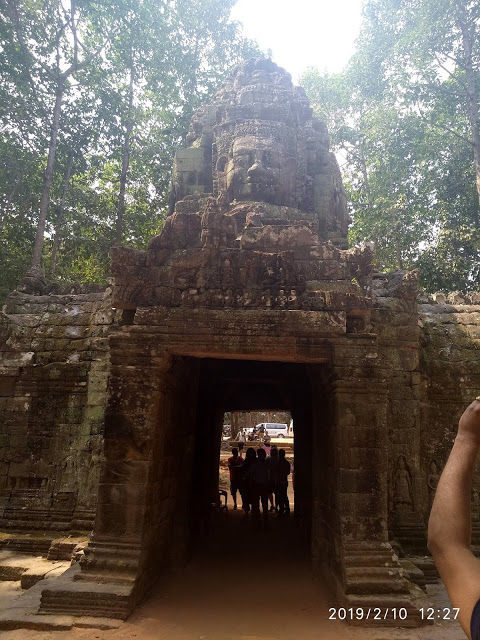
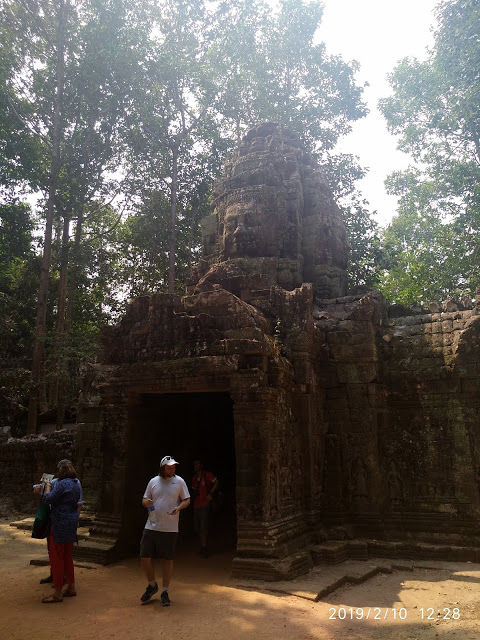

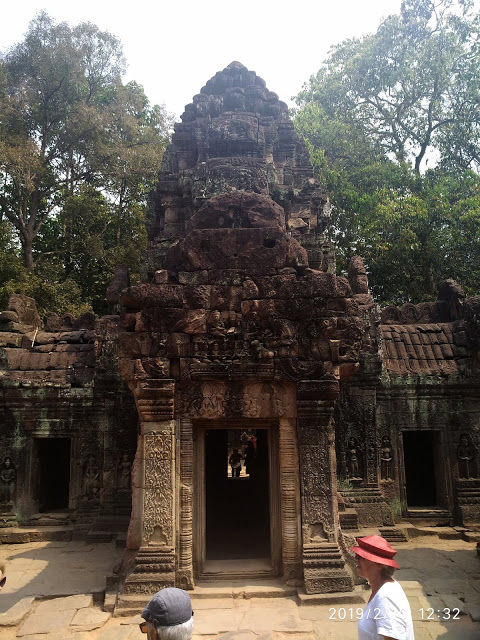
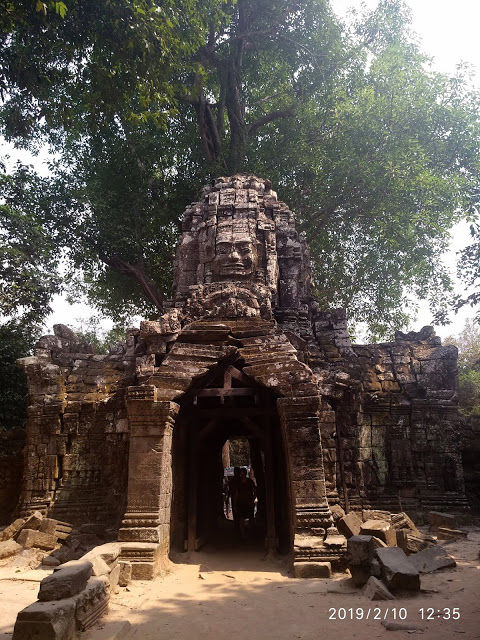
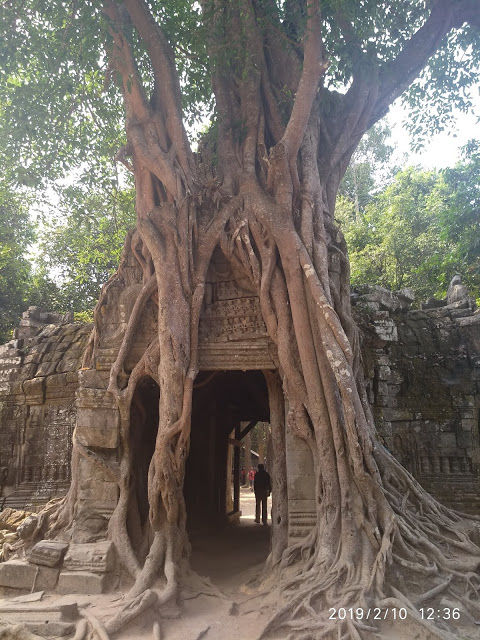
next to visit is neak pean temple. Neak Pean was originally designed for medical purposes (the ancients believed that going into these pools would balance the elements in the bather, thus curing disease); it is one of the many hospitals that Jayavarman VII built. It is based on the ancient Hindu belief of balance. Four connected pools represent Water, Earth, Fire and Wind. Each is connected to the central water source, the main tank, by a stone conduit "presided over by one of Four Great Animals ( maha ajaneya pasu) namely Elephant, Bull, Horse, and Lion, corresponding to the north, east, south, and west quarters....The stone conduits in the little pavilions are fashioned to represent the heads of the Four Great Animals...the only exception being that on the east, which represents a human head instead of a bull's
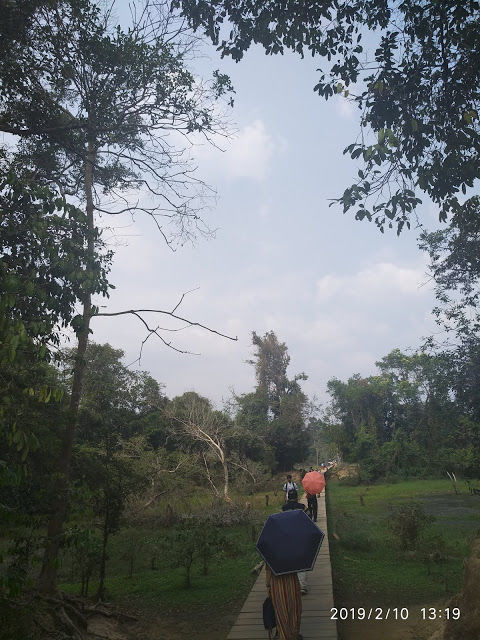
it is a long walk from the main road over wooden planks. swamps on either side. they have boards there which strongly suggest not to venture into the swamps because of unidentified landmines presence. still some idiots go in to the swamps to take pics.
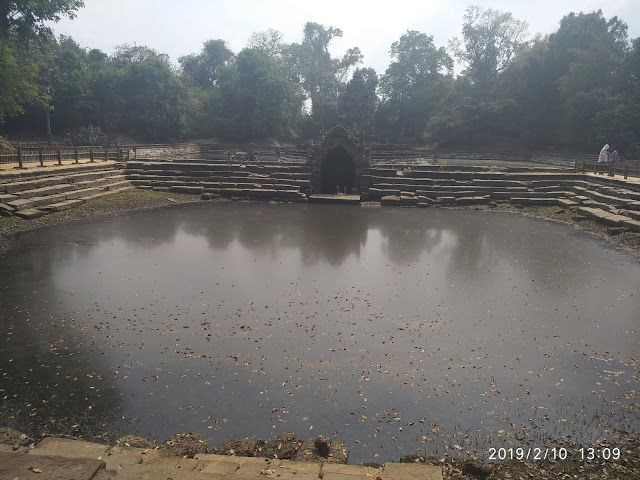
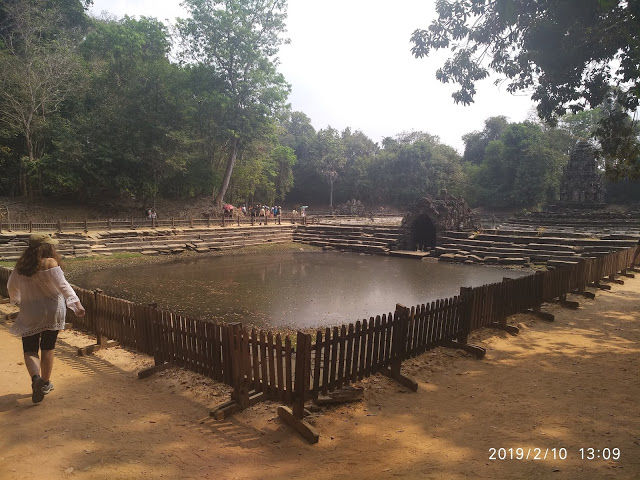
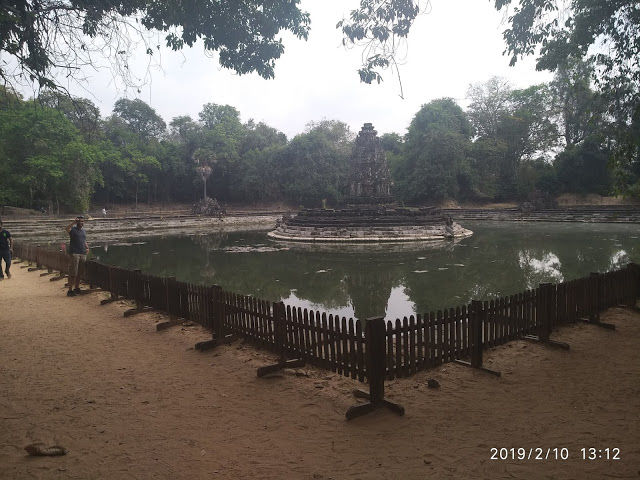
next to see is the preah khan temple
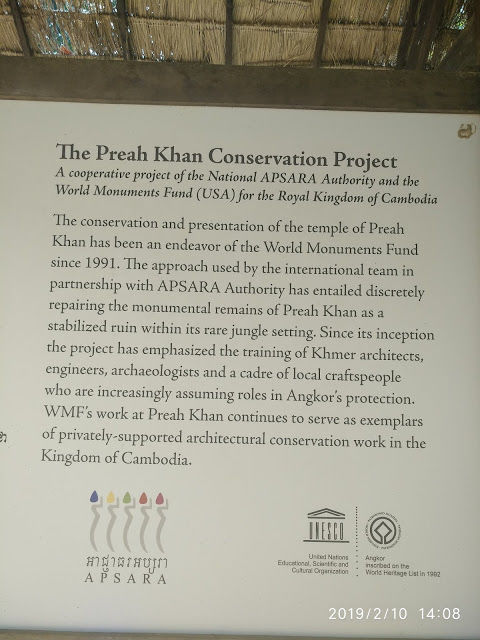

the above is the entry to the preah khan
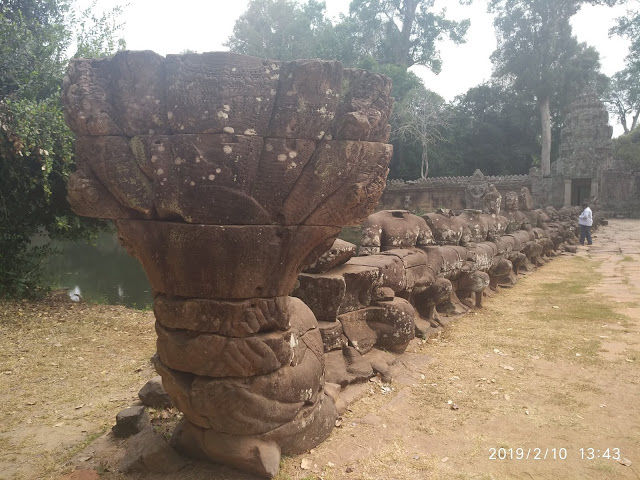
stones have been used to build all these temples with no joints or binding media. all of them are carved in a way that when they are placed together, they lock into place.
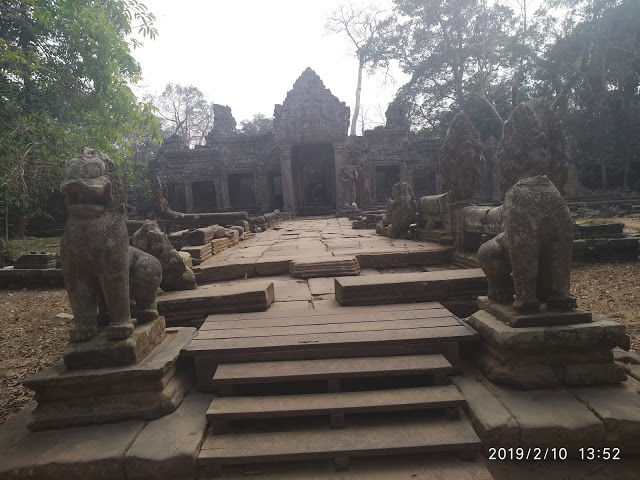

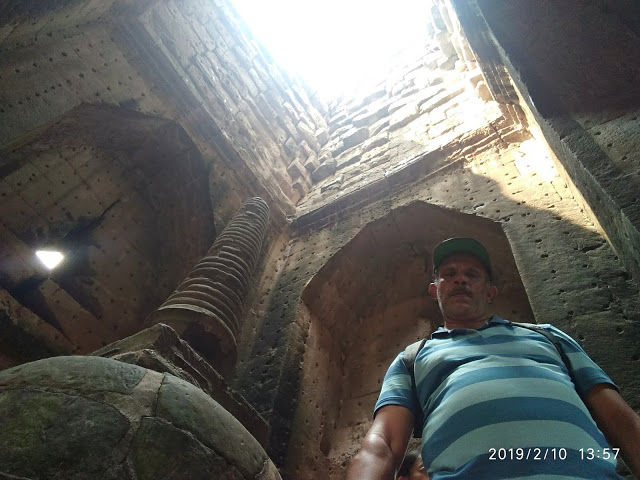
shiva linga right in the middle of this temple and below is one of the exits of the temple on the other side.
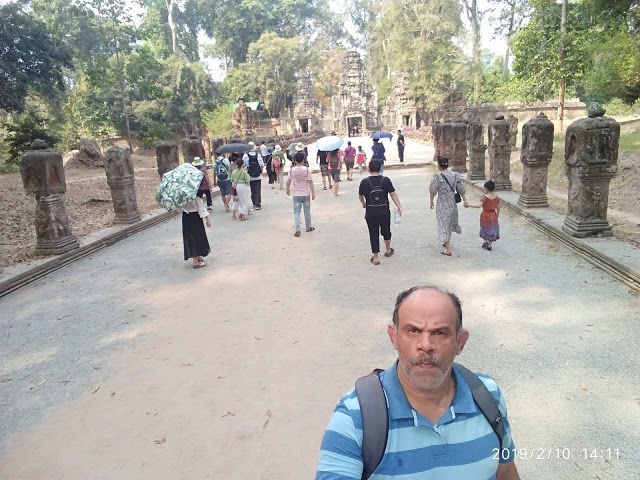
next place is called bayon. The Bayon is a richly decorated Khmer temple at Angkor in Cambodia. Built in the late 12th or early 13th century as the state temple of the Mahayana Buddhist King Jayavarman VII, the Bayon stands at the centre of Jayavarman's capital, Angkor Thom. Following Jayavarman's death, it was modified and augmented by later Hindu and Theravada Buddhist kings in accordance with their own religious preferences. The Bayon's most distinctive feature is the multitude of serene and smiling stone faces on the many towers which jut out from the upper terrace and cluster around its central peak.
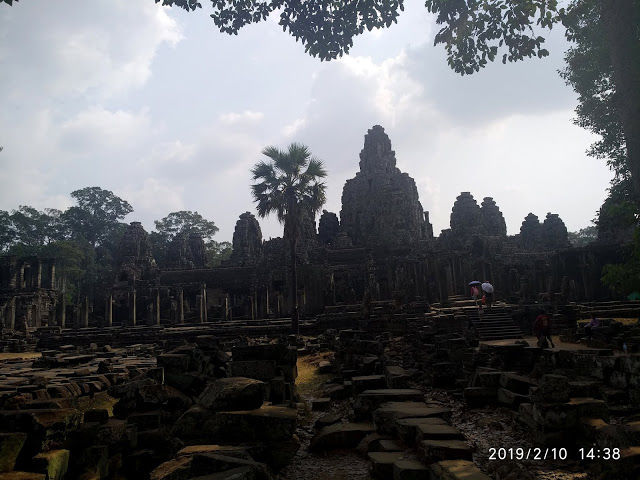

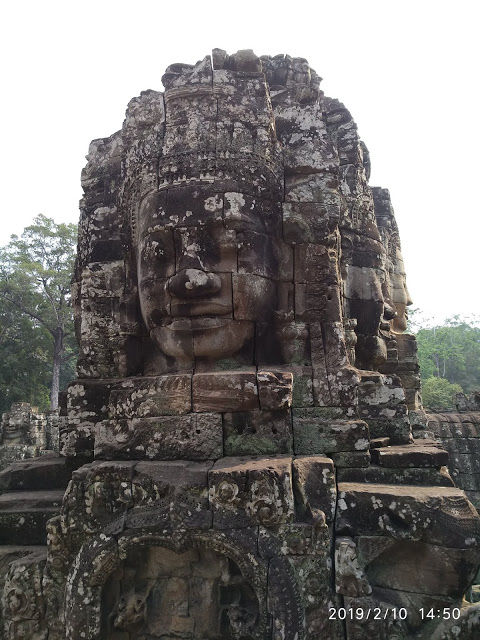
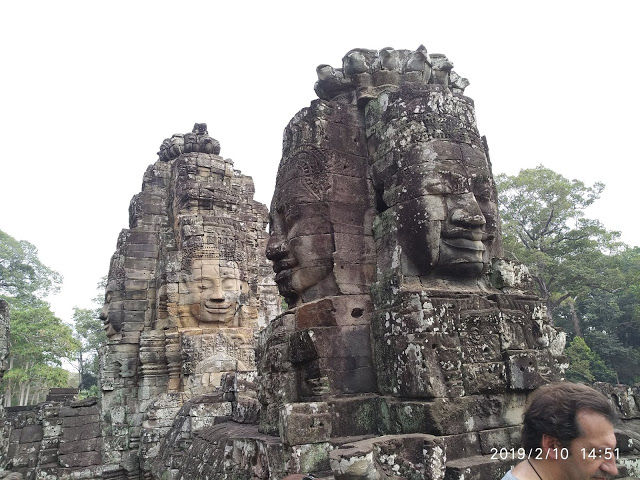

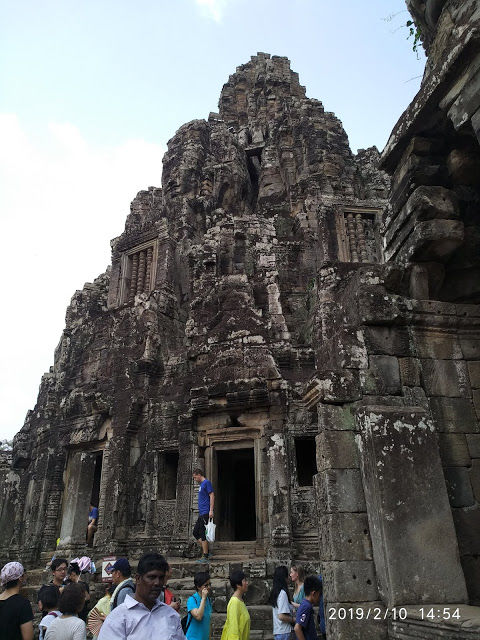
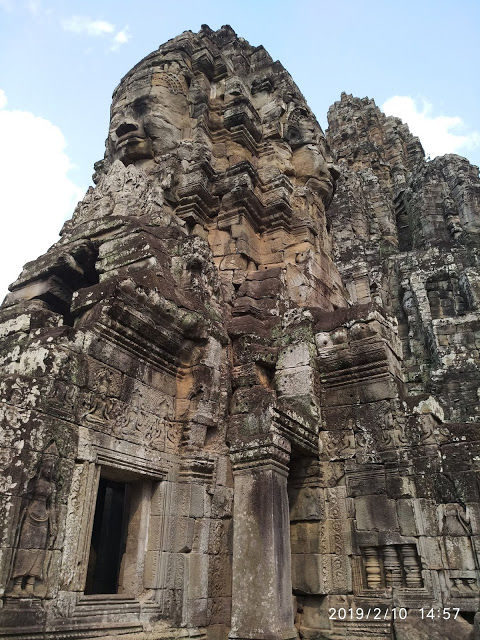
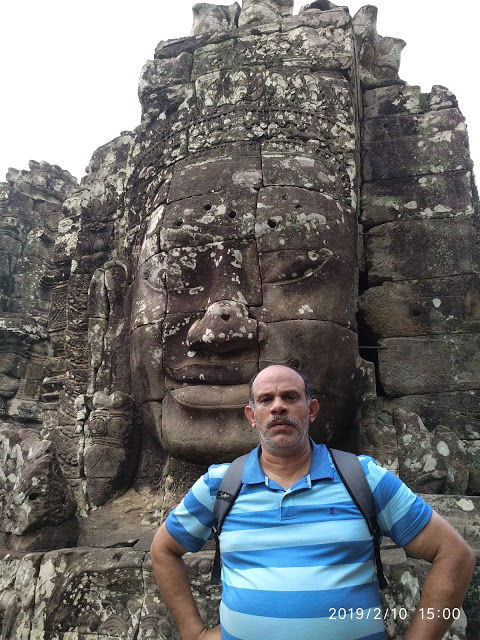
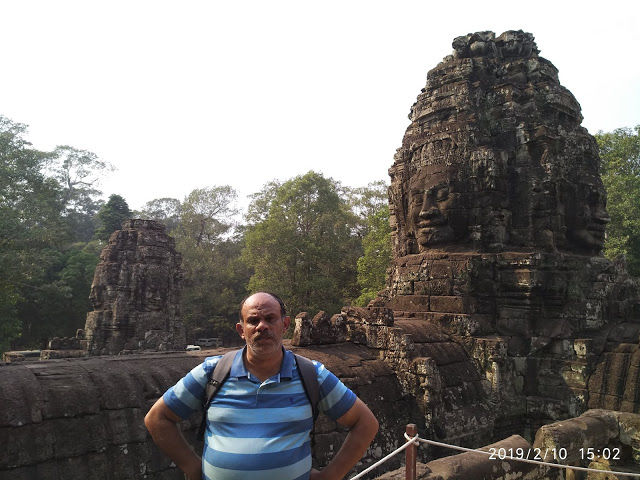
all these stones are not joined by any medium, they are placed next to each other and have been so well carved that once placed they just lock into place. no necessity of any kind of joining medium.
next is the world famous angkor wat. below is the entry point to go inside. the actual temple is the big complex you see far behind in the below pic.
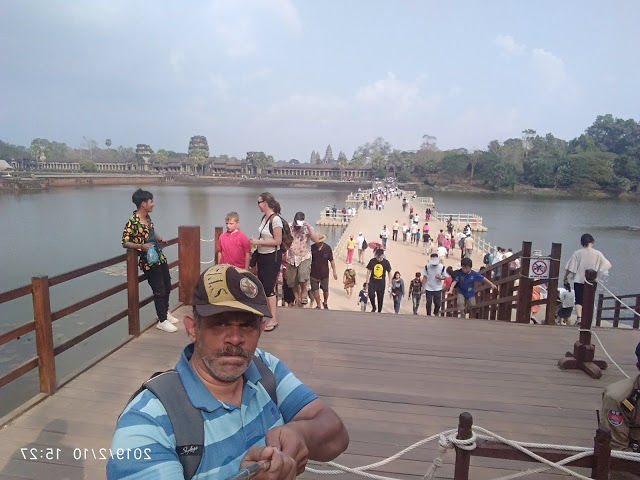

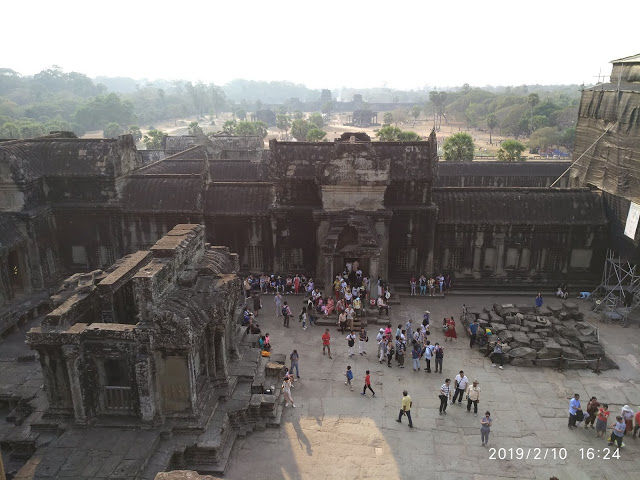
from top of angkor wat. below is the steep steps to ascend and descend to the top of the structure.


below are some of the intricate carvings on the side walls of angkor wat

temple view from side
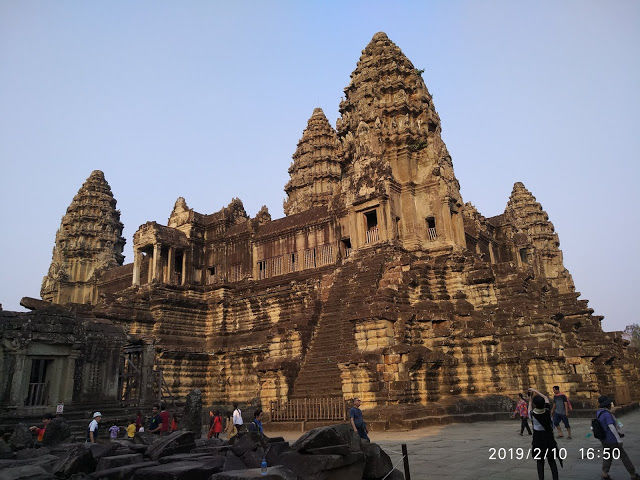
stories from the mahabharata and ramayana etched in stone on two long stone walls at the entrance
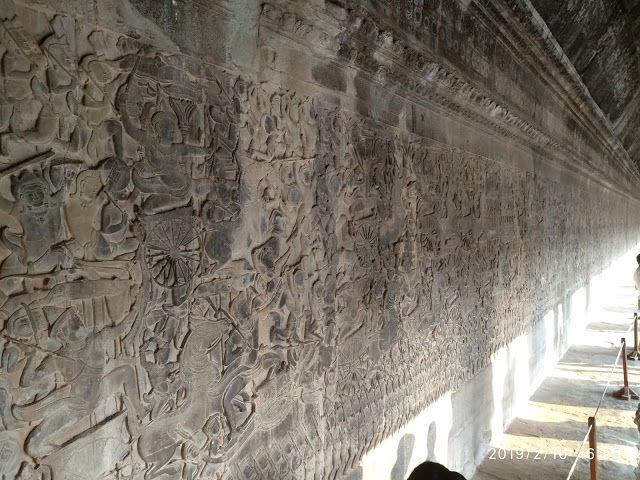

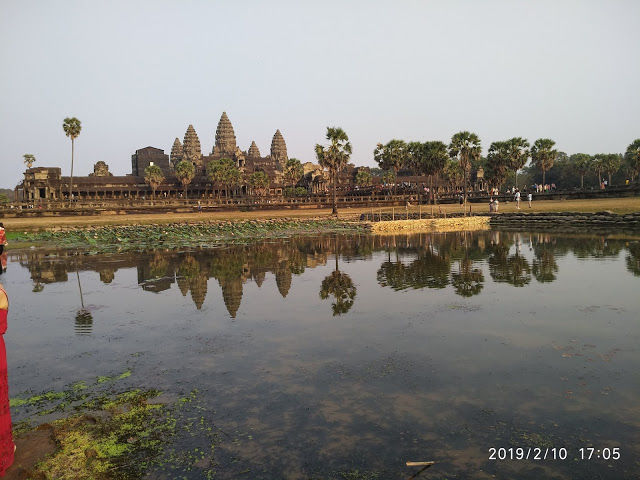
standard selfie at the angkor wat. supposedly the sunrise view at this point is very beautiful. so every day there are approximately 3000 people to view the sunrise. the sun rises right behind the towers visible in the background.

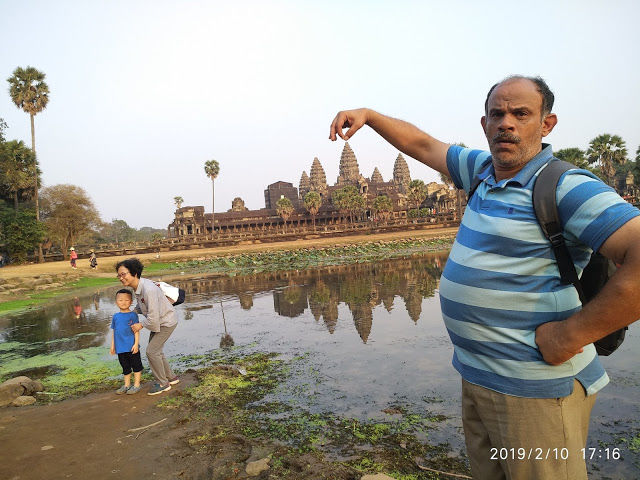
below is another view of the temple from a building in front of it which was the library

worms fried and being sold as snacks at the temple

big coconuts for one dollar. the entire coconut is kept in the freezer . when we order it, they take it out, cut it and give it to us.
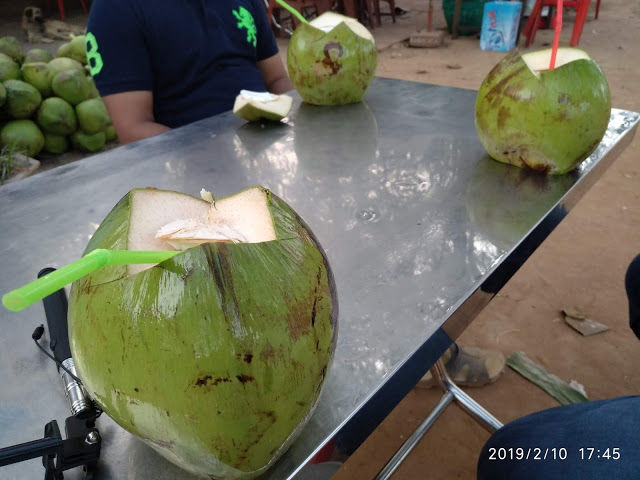
the tour map taken by us is given below. tuk tuk rides are available at the hostel. small tour is charged $15. big tour is charged $20. both the tours together is charged at $25. we took the $25 tour. to see all the temples but one day is not enough. it is better to take a three day pass. each day you can cover 3-4 temples and have the rest of the day to rest or do something else. it gets pretty hot during the day. so take the early morning ride, cover a few temples and come back to your hotel or hostel.

video of karaoke singing in the night market in siem reap
later that night we took the bus back to phnom penh

